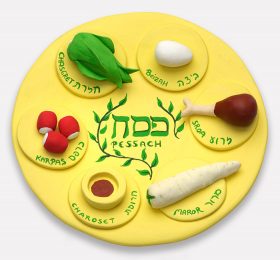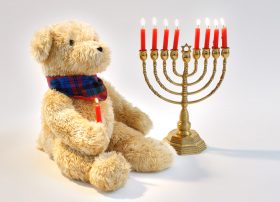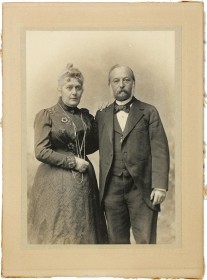
Shlomit Tulgan made this Seder plate from clay for our children’s exhibition on Passover; Jewish Museum Berlin, photo: Jens Ziehe.
It’s Seder and the family is getting together. Some are traveling from farther away, others are flourishing right here. At the table are escarole, lettuce, parsley, kohlrabi, Belgian endive, and dandelion. But what about horseradish and red radish? They’re both late this year.
The story of the plants and their fruits that have particular meaning on the Seder plate at Passover could be told in various similar ways. They all grow in the Diaspora Garden, which you can visit inside the W. Michael Blumenthal Academy at the Jewish Museum. → continue reading
“8 Facts” about the Jewish Feast of Dedication

Jewish Museum Berlin, photo: Jens Ziehe
1
The history of the Jewish Festival of Lights is about the one temple in Jerusalem. To be precise, about its re-consecration (“Hanukkah”) in the year 164 B.C.E. after it had stood for many years under Syrian-Greek control.
2
During this period of foreign rule, two groups were in conflict: on the one side was the Seleucid Empire under Antiochus IV Epiphanes, while on the other side were the courageous Maccabees led by the priest Mattathias and his sons. → continue reading

Emanuel and Johanna Stern, ca. 1903; Jewish Museum Berlin, gift of Alexander Summerville
Just over two years ago, I penned a blog text describing a Passover Haggada that I had purchased online. It caught my attention due to the lists of names written on the inside front and back covers of individuals who attended the Passover Seders over the course of seven years that were held in two residences in Berlin, both of which were in close proximity to the Jewish Museum Berlin. Research revealed a substantial amount of information about various persons named therein and my text concluded with the hope that contact might be established with descendants of some of those found in the lists.
At the end of March of this year, I flew to Stockholm to visit Alexander Summerville, the great grandson of Paul Aron, in whose home in the Hedemannstraße 13/14 Passover Seders took place in five of the years for which lists exist in the Haggada. → continue reading


